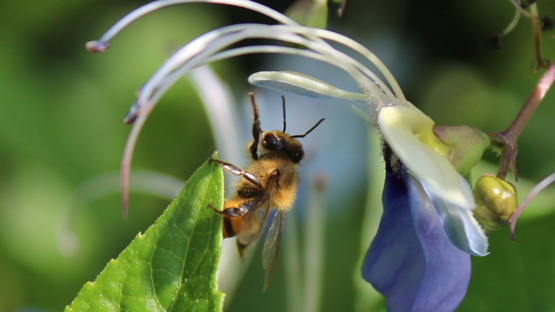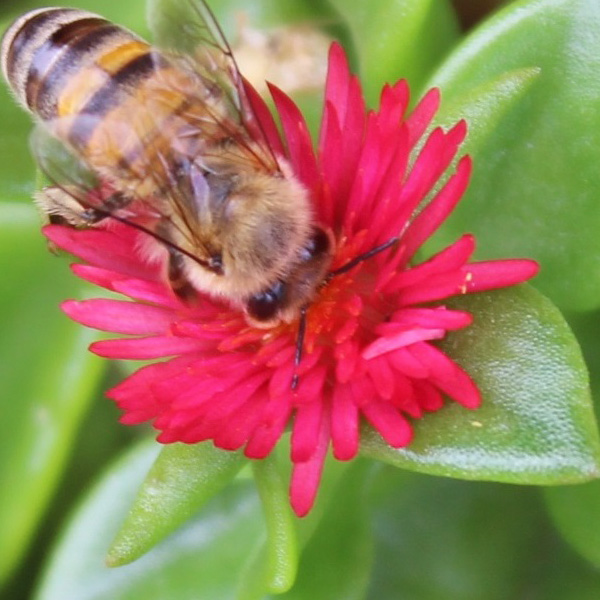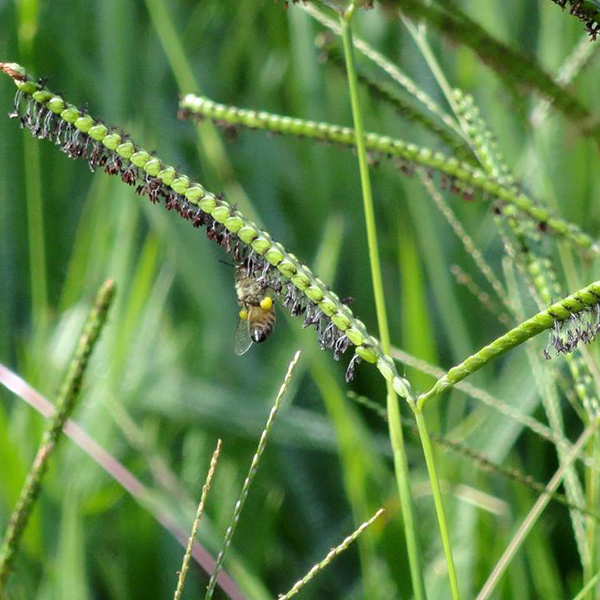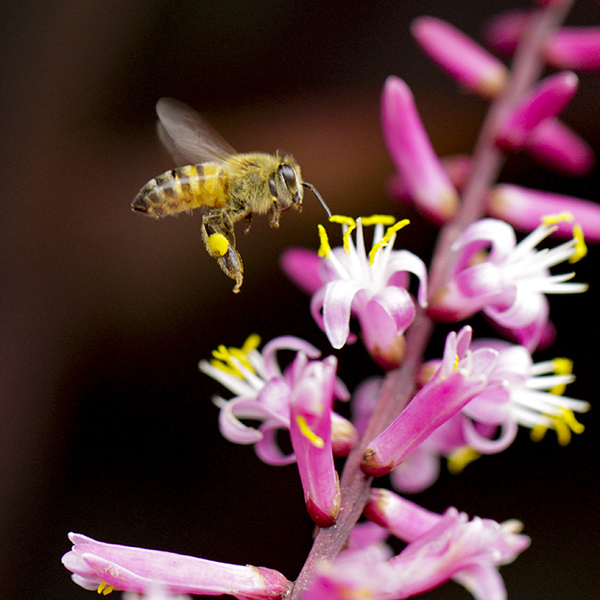What is this sound?
What is this sound?


At dawn, a jataí bee leaves the hive in search of its food. It’s spring, and a vast flowering forest presents itself. On its journey, it flies between trees, leaves, and arrives at the flowers. Among the many differences presented to her by Nature, the bee chooses one, lands and enjoys its nectar.
On the other hand, the jataí bee offers its hair as a structure for fixing the pollen of this same flower to carry out its journey of fertilization, pollination. From the observation of such a subtle dance, of such great importance for the continuity of the Cycle of Life, a question arises: why did the bee choose one flower over many others?



The process of evolution led flowers to adopt strategies to attract insects, through their colors, shapes, and smells. This is a widely studied topic among researchers on the subject. However, according to a study conducted by Tel Aviv University (Israel), there is new data with potential interference in the choice of our bee: plants emit sound.
This research found that plants are capable of emitting sound waves between 20 and 150 kHz. This variation can occur depending on the situation experienced (lack of water, for example, can cause a plant to “scream”). Researchers also report that animals are able to perceive these sounds emitted by plants. Possibly bees also make choices of whether or not to land on a flower according to the sound waves emitted by the flower.
After all, what is this sound?
Sound is certainly an omnipresent phenomenon in our lives. The sound of speech, of the movement of all bodies (human bodies, cars, airplanes, trains…), of music, sounds of water, of wind. Technically, sound is a wave capable of propagating through the air and other media from the vibration of its molecules.
If we think in terms of hearing and coding, sounds are basically captured, processed and “understood” (perceived) by our hearing apparatus, structured in turn into electrical impulses interpreted by our brain. There is also the perception of sound by its vibration in our bodies, arms, legs and torso.
There is something called the “audible spectrum”, that is, the range of sound frequency that can be captured by the human ear, varying, approximately, between 20 Hz and 20,000 Hz. Below or above these limits we have, respectively, infrasound and ultrasound.
Animals such as dogs, cats, rats, owls, bees and bats capture sounds in a much wider frequency range compared to humans. Apparently, each animal has a unique and complex auditory system, allowing it to perceive and interpret different sound frequencies.
But back to the beginning, we said that the jataí bee chose a flower and landed on it. Perhaps the reader has wondered which flower it chose. The answer is: the evening primrose. To illustrate our text, we chose this flower because, in another research conducted by the same Tel-Aviv University, it was found that the evening primrose also has the ability to hear.
Scholars tested different sound frequencies, but only the one similar to the sound emitted by bees generated a reaction in the flower. Anyway, when it hears a bee approaching, it increases the production of sugar in its nectar by up to 30%! And, in this way, it is able to create an attraction for the bees.



More recently, sound has been studied in relation to bodies so far ignored as producers of any sound. In fact, if the very idea that we live and experience a vibrating universe is not new, conceiving such vibrations as sound impulses seems to be a quite natural conclusion, and also extensible to living beings in general.
Plants certainly emit sounds, express feelings, and react to situations. They therefore compose their own symphony, which doesn’t need to be decoded into human musical notes, just as the sounds of animals, minerals, planets and other living beings don’t need such translation.
Be that as it may, when you’re in contact with nature, try to adjust your sensitivity to perceive these subtle vibrations, which can also widen your own perceptions, not only of the environment you’re in, but also of yourself.
Contributed by André Luís S. Cezaretto and Antonio Celso B. Minhoto.
References:
https://www.researchgate.net/publication/332717209_Sound_perception_in_plants/citation/download
https://www.wired.com/story/plantwave-music/
https://www.nationalgeographicbrasil.com/ciencia/2019/01/flores-podem-ouvir-o-zumbido-de-abelhas-e-deixar-seu-nectar-mais-doce
https://www.bbc.com/portuguese/geral-50789761









